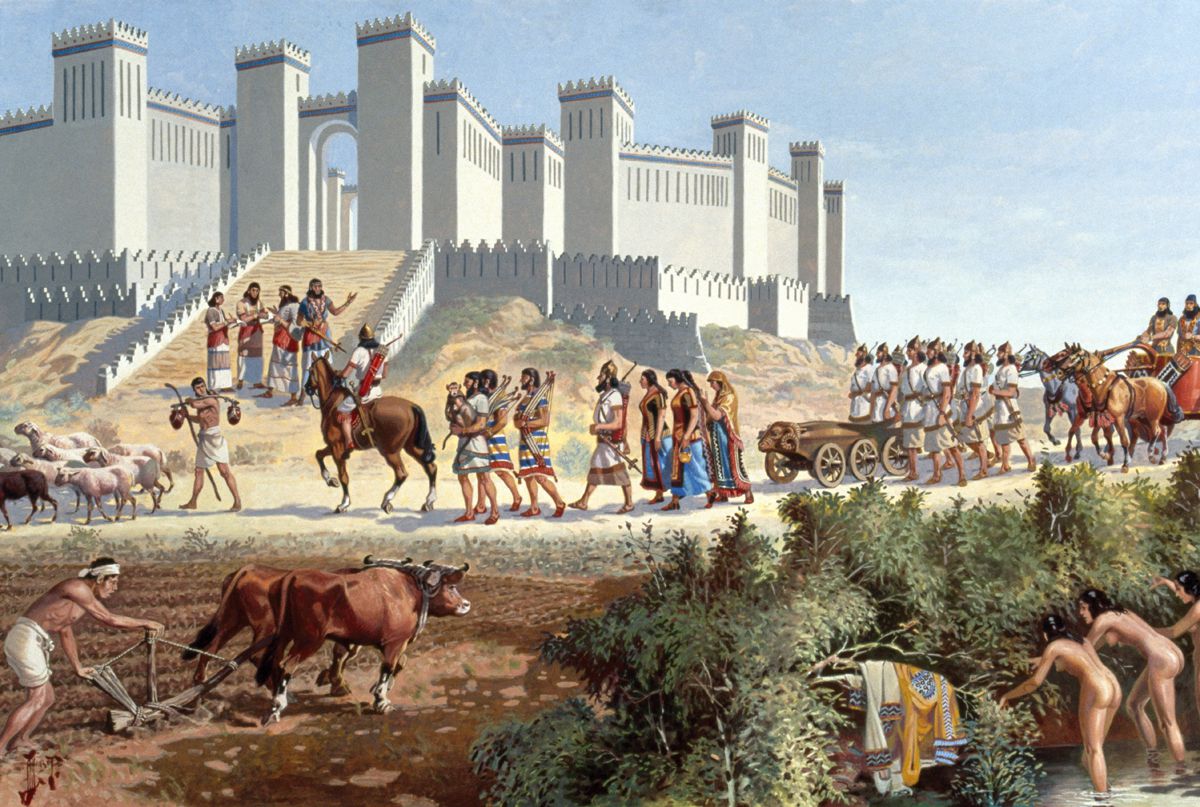The period before humans left written records is called prehistory. Our knowledge of this period depends on archaeological findings. Although fossil remains of apelike human ancestors have been found that date back millions of years, the first generally accepted humans appeared in Europe and the Near East about thirty-seven thousand years ago and are called Homo sapiens, meaning the “one who thinks.”
Archaeologists call early human culture the Old Stone (Paleolithic) Age because of the crude stone implements in use at the time. Paleolithic humans have left remarkable cave paintings and carvings. About 8000 B.C. humanity advanced to the New Stone (Neolithic) Age, marked by the domestication of animals and plants and the development of more permanent dwellings.
The decisive step from prehistory to history was the invention of writing by the Neolithic inhabitants of Mesopotamia around 3500 B.C. By 3100 B.C. the Sumerians in southern Mesopotamia had invented bronze and developed cuneiform writing into a flexible tool of communication.
Mesopotamia was what historians call a hydraulic society, one based on the centralized control of irrigation and flood management. There were many cities, each with its own bureaucracy and temple. Among the legacies of Mesopotamian culture are the first law codes, the first epic, Gilgamesh, and certain religious concepts, such as the story of a primeval flood, that have persisted in Western thought.
The Sumerian city-states gave way to the Babylonian (about 2300 B.C.) and Assyrian (about 1100 B.C.) empires. Eventually, all of Mesopotamia was absorbed by the Persian Empire in the sixth century B.C.
Another Neolithic hydraulic society developed along the Nile River in Egypt, which was first united into a single state around 2850 B.C. Egypt became a highly bureaucratic society ruled by a god-king, the pharaoh. Ancient Egyptian history is divided into three broad areas of unified rule, separated by periods of division and anarchy: the Old Kingdom (2700-2160 B.C.), the Middle Kingdom (2134-1786 B.C.), and the New Kingdom (1575-1087 B.C.). Thereafter, Egypt entered a period of political decline and foreign rule.
Religion was the most powerful force in Egyptian society. The Egyptians had many gods and were preoccupied by life after death. To ensure survival in the next world, they built elaborate tombs and mummified the bodies of the dead. Much of what we know about ancient Egypt comes from what was found in its tombs.
Egyptian writing, called hieroglyphics, was deciphered only in the nineteenth century. Egyptian literature includes love songs and what is perhaps the first fiction.
The Hebrews were nomads who established themselves in Palestine around 1300 B.C. The importance of the Hebrews lies in their religion. They were the first to insist that their god was the only god and a universal god. They were also the first people to record their history in a series of books-the Hebrew Bible.
Cretan civilization is called Minoan after Minos, the legendary founder of the local dynasty. The Cretans ruled a maritime empire from a vast palace at Knossos. Cretan prosperity ended between around 1645 and 1400 B.C., though whether because of natural disaster or foreign conquest is unclear.
Bronze Age civilization in Greece is called Mycenaean because one of its chief centers was at Mycenae in southern Greece. Mycenaean civilization was based on heavily fortified palace centers and was highly bureaucratic. Its most lasting and important legacies are the great epic poems the Iliad and the Odyssey.

